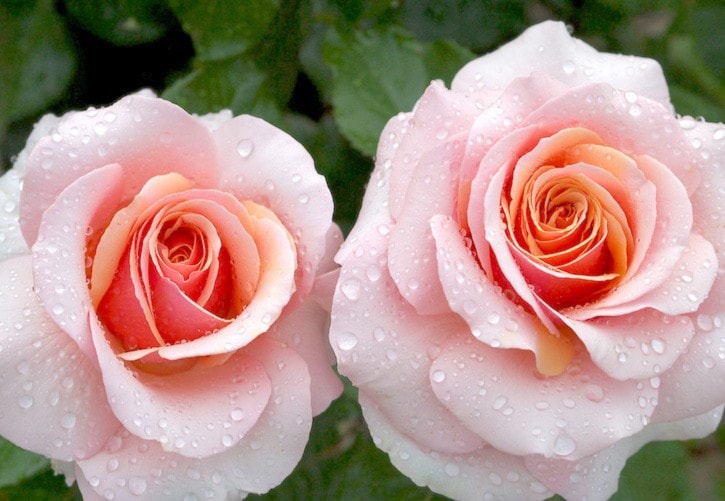Rose-pruning time is pretty much behind us, but clipping out the weak limbs and dead growth can still be done if you missed the more thorough pruning. These plants need little attention for the glory of the long blooming season, in my opinion. I especially like that they grow best with only other roses around them, so I never have to guess when something else comes up in that bed: it’s a weed and needs to go. Rose prickles are a drawback, but beauty generally comes at a cost.
If you plan a bed of roses think it through so there is continuous blooming from mid-June into September. Space between plants will help ease the pruning, and provide enough air circulation to avoid powdery mildew and blackspot. It is much nicer to attend to each plant if you have room to move around them.
A little research will tell you that Hybrid Tea Roses will bloom over the entire growing season, but often have no fragrance. They are three- to five-feet tall, and if placed in the middle of the bed you won’t miss the aroma. Their blooms are extravagantly displayed on long stems.
Polyantha roses are small, compact plants with lots of clusters of flowers. They are hardy and easy to grow.
Floribunda roses are a cross between Polyantha and Hybrid Teas and are hardy, compact, with plentiful medium-sized blooms borne in short-stemmed clusters all summer.
They usually are the most fragrant, but you need to read the container when you buy any rose to check for aroma. The front of the rose bed is ideal for these ones.
Grandiflora roses stand six feet upright, growing long-stemmed clusters of large flowers. This makes them extremely showy and they bloom well into the fall. They tend to be more subject to diseases in my experience, but some have been produced now that claim better resistance.
Miniature roses are houseplants, mostly. I did have a miniature given to me once that I set free at the end of its bloom by planting it outside in a corner of a garden bed. Well, the next summer it came up again from the root stock it had been grafted onto, and was a lovely, but way too huge, rambling rose! It clawed us for attention when we mowed the lawn once too often, and after whacking it back for a number of years I finally had it dug out and heartlessly discarded.
So, back to a bed for roses… If you can plan a new site, remove a full shovel of dirt. Add copious amounts of composted manure, bone meal, humus (compost, seaweed, peat moss) and, into the deeper layer of soil, rose-specific fertilizer at the recommended rate. Then add about half the dirt you had set aside and claw that into your nutrients. The point is to create a yummy, water-retaining soil for the rose roots to grow strong in. The top fill-in area is not where the new bushes will seek food at first. Once the deep layer is set up, your tending duties can be a handful of fertilizer scratched into the soil in spring and mid-summer, along with water as needed, and pruning in the winter. If we do not encourage the roots near the surface, they will not be damaged when weeding or scratching in rose food. I like to make a well around each plant for the water to soak in by the plant, rather than risk the water running off when the soil gets crusty from the drying wind and sun, which I am anticipating.
Damaging the surface roots of shrubs will cause “galls” which are actually tumours on plants caused by gall-forming microbes. These occur by the graft when the outside of a stem is bent or damaged by wind.
Galls are studied by scientists called “cecidologists.” Galls grow in many forms, even on leaves sometimes, and cediologists describe them as “exquisite examples of how plants and their enemies have come to accommodate each other.” Club root in the brassica family is caused by slime-mold fungi and is classified as a gall. The nitrogen-fixing nodules on legumes are also galls, and are extremely valuable. Some types of galls are used for dyes and medicines, and even for bio-control of invasive field weeds.
This information all comes from Rodale’s Encyclopedia of Organic Gardening, which is still my favourite garden book.
